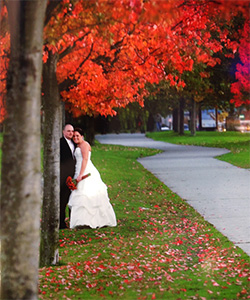We’ve mentioned metallic silver prints here on the Photoblog, but unlike the other kinds of photo prints, we’ve never given them their very own feature post. I’m not sure why this oversight has continued to occur, but it’s an injustice that must end today! After all, they are certainly no less impressive than the Photolab’s other fine art prints.
Metallic silver paper has a fine surface, with a scratch-resistant high-gloss metallic finish that allows for exceptional image clarity and brilliant colour reproduction. The paper has tiny metallic grains in it that reflect the light in each colour differently. This means that no two colours will pop in the same way, and the contrast between colours really stands out. The Photolab technician I spoke to also mentioned that the metallic silver prints would work incredibly well on a black-and-white photo.

My iPhone photo of the metallic silver print sample from the Photolab sample book. On your screen, it looks like any other photo. You can’t see the incredible vibrancy, colour reproduction or unique look of the paper – which is why you need to see it for yourself at your local Photolab.
Metallic silver paper also really accentuates the depth of field, because it gives the image a very three-dimensional quality. You can especially notice this when you compare it to a standard glossy print. The Photolab’s sample print (shown below) does an excellent job demonstrating the paper’s particular advantages:
The row of trees that disappear into the horizon line really showcases the 3D effect, while the red leaves on the ground are quite striking set against the green of the lawn.
There are many different gradients of red in the leaves on the trees, and they all burst in different ways.
The paper even makes the grey pathway more vibrant, and the bride’s white dress absolutely shimmers.
The clarity, definition and visual effects these prints provide make them incredibly engaging to look at on a wall. However, you won’t notice these things on your screen, which is why I highly recommend checking out the sample with your own eyes at your local Photolab.

